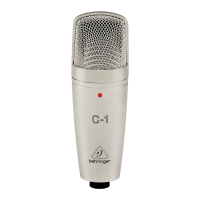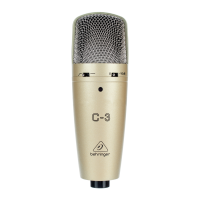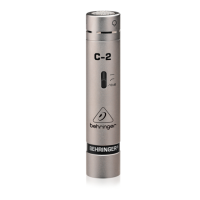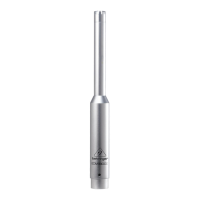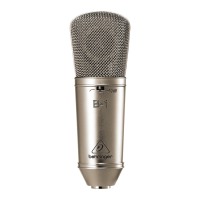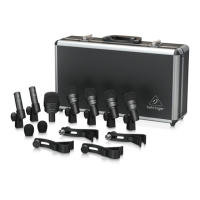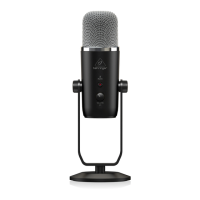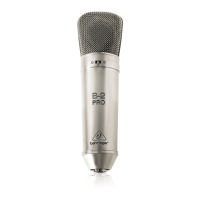4
SINGLE DIAPHRAGM CONDENSER MICROPHONES C-4 User Manual
Of course, you can use your microphones individually as well. A cardioid pattern
capsule is often used in recording situations in which several sound sources are present.
Since this capsule selectively tones down the pickup of sounds located to the side of the
microphone, this way you can achieve good separation of sound sources, thus easily
avoiding feedback.
5. Low Cut-Filter and
Signal Level Attenuation (-10dB)
The C-4 studio microphones feature a switchable low-cut lter that lets you eliminate
low-frequency disturbances such as subsonic noise. Set the switch to its middle position
to activate the low-cut lter.
A switchable level attenuation is provided on your C-4s for applications in which the
microphones are exposed to extremely high sound pressures. When the switch is in its
“-10dB”position, the level attenuation is activated.
When the switch is in its top-most position, the signal is not inuenced in any way.
6. Microphone Installation
To attach the microphones to the microphone stands, two clamps are included with the
delivery. First screw a clamp onto the stand before attaching the microphone itself.
7. Audio Connection
Use a balanced XLR microphone cable with the following pin assignment:
pin1=shielding; pin2=+; pin3=-. Since your PSU-T features gold-plated contact
points, we recommend that you use only microphone cables with gold-plated connectors.
8. Level Setting/Adjusting the Basic Sound
Adjust the gain control in the microphone channel of your mixing console so that the
peak LED lights up only occasionally or never at all. The EQ controls in the microphone
channel should be set to mid-travel position to start with; low-cut lter and signal
level attenuation should be switched o. To get the sound you want, try changing the
mic position relative to the sound source or even move the microphone around in the
recording room of your studio. Adjusting the angle at which walls face the sound source
can also be helpful. Only when the desired basic sound has been achieved, you should
start to use equalizers and signal processors, if any at all. Remember: less is often more!
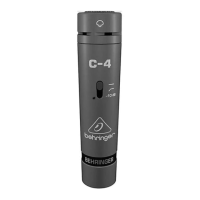
